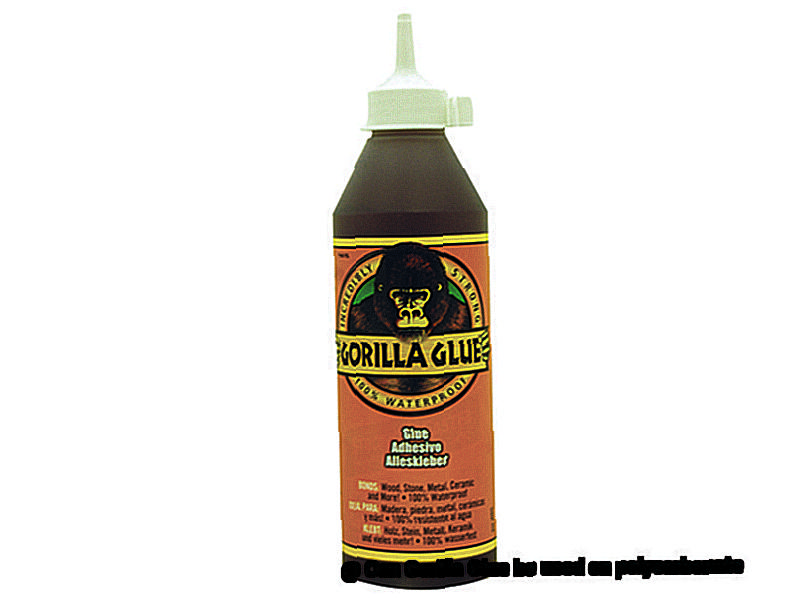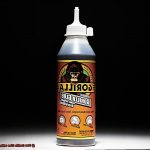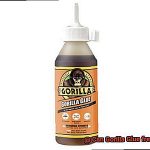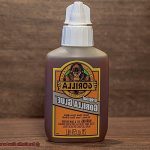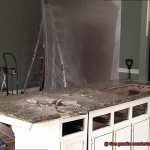Have you ever wondered if the legendary Gorilla Glue can work its magic on polycarbonate? Well, you’re in for a treat because we’re about to dive headfirst into the captivating world of bonding these two bad boys together.
So, grab your safety goggles and let’s embark on this adhesive adventure.
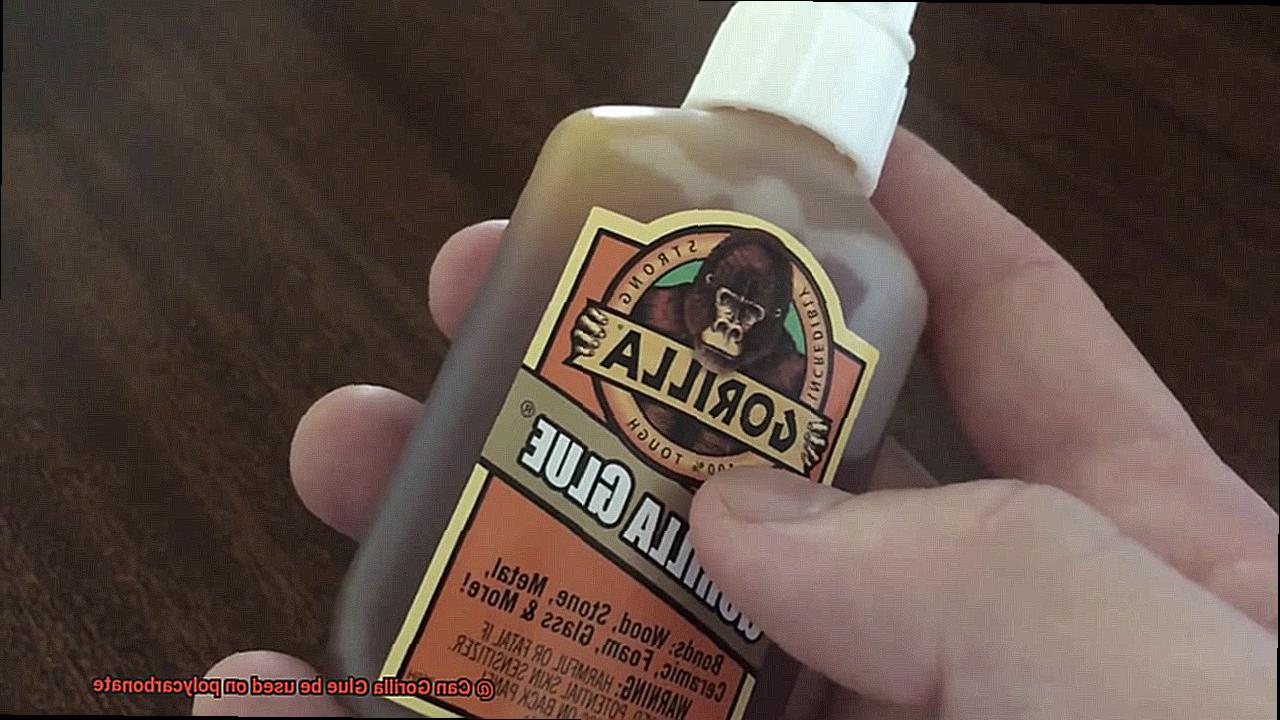
Compatibility of Gorilla Glue with Polycarbonate
Contents
- 1 Compatibility of Gorilla Glue with Polycarbonate
- 2 Advantages of Using Gorilla Glue on Polycarbonate
- 3 Disadvantages of Using Gorilla Glue on Polycarbonate
- 4 Surface Preparation for Applying Gorilla Glue to Polycarbonate
- 5 Special Considerations When Using Gorilla Glue on Polycarbonate
- 6 Alternative Adhesives for Bonding Polycarbonate
- 7 Testing the Strength of the Bond between Gorilla Glue and Polycarbonate
- 8 Conclusion
Choosing the right adhesive is crucial when it comes to bonding materials together. For the tough and impact-resistant thermoplastic polycarbonate, finding a compatible adhesive can be a challenge. However, Gorilla Glue, known for its exceptional bonding capabilities, has shown promise as a suitable option. In this article, we will explore the compatibility of Gorilla Glue with polycarbonate and discuss important factors such as surface preparation and application techniques for achieving optimal bonding results.
Understanding the Compatibility:
Users have reported that Gorilla Glue, a polyurethane-based adhesive, works well with polycarbonate. Polyurethane adhesives generally have good bonding properties with various materials, including plastics. However, due to the unique characteristics of polycarbonate, it is important to consider proper surface preparation and application techniques for successful bonding.
Surface Preparation:
To ensure a successful bond between Gorilla Glue and polycarbonate, thorough surface preparation is essential. Begin by meticulously cleaning the plastic surface to remove any dirt, grease, or contaminants that may hinder adhesion. Using alcohol or a specialized plastic cleaner will help achieve a pristine surface.
To enhance bonding strength, slightly roughen the surface using fine-grit sandpaper or apply a primer specifically designed for plastics. This step allows the adhesive to create a mechanical interlock with the polycarbonate surface.
Application Techniques:
Achieving an even application of Gorilla Glue is crucial for a clean and effective bond. Avoid excessive application as it can result in messiness and potential damage to the polycarbonate surface. Following the recommended curing time is vital to allow the adhesive to fully set and achieve maximum bond strength.
Considering Other Factors:

While Gorilla Glue can work well with polycarbonate, it’s important to note that individual results may vary based on factors such as surface preparation, application technique, and specific product formulations. For critical projects, conducting a small-scale test or consulting with the manufacturer of both the adhesive and the plastic is recommended to obtain optimal bonding recommendations.
Conclusion:
Gorilla Glue can serve as a compatible adhesive for bonding polycarbonate when proper surface preparation and application techniques are followed. By adhering to the manufacturer’s instructions, cleaning the surface thoroughly, and slightly roughening it, a strong and long-lasting bond can be achieved. However, it’s crucial to consider other factors and conduct tests if needed, especially for projects with specific requirements.
Advantages of Using Gorilla Glue on Polycarbonate
Gorilla Glue is the perfect adhesive for bonding polycarbonate surfaces together, offering a range of advantages that make it the go-to choice for this application.
First and foremost, Gorilla Glue creates an incredibly strong bond. Its exceptional adhesive qualities ensure that your polycarbonate surfaces will be securely held together. Polycarbonate is a lightweight and flexible material that requires a reliable adhesive to keep it in place, and Gorilla Glue delivers on that need.
In addition to its strength, Gorilla Glue is also highly versatile. It can be used on various materials, including polycarbonate. Whether you want to bond two pieces of polycarbonate together or attach polycarbonate to another material, Gorilla Glue has got you covered. Its versatility has made it a popular choice among both DIY enthusiasts and professionals.
Another advantage of using Gorilla Glue on polycarbonate is its waterproof properties. Polycarbonate is often used in outdoor applications where exposure to moisture is inevitable. With Gorilla Glue, you can rest assured that the bond between the polycarbonate surfaces will remain unaffected by water, preventing any potential damage or weakening of the adhesive.
Polycarbonate can also be exposed to extreme temperatures, both hot and cold. Luckily, Gorilla Glue is known for its temperature resistance. It can withstand a wide range of temperature variations without compromising its bonding strength. This is particularly beneficial when using polycarbonate in environments where temperature fluctuations are common, such as automotive applications or outdoor structures.
In addition to its other advantages, Gorilla Glue also has a gap-filling ability. It expands as it cures, filling any gaps or irregularities between the polycarbonate surfaces. This ensures a strong and secure bond, even if the surfaces don’t have a perfect fit or are not in direct contact with each other.
Last but not least, Gorilla Glue is durable and long-lasting. It is designed to provide exceptional strength and durability, ensuring that the adhesive bond withstands the test of time. This is crucial when working with polycarbonate, as it is often used in applications that require longevity and resistance to wear and tear.
Disadvantages of Using Gorilla Glue on Polycarbonate
When it comes to adhesive superheroes, Gorilla Glue often takes the spotlight. But even heroes have their limitations. In this article, we will delve into the disadvantages of using Gorilla Glue on polycarbonate surfaces. So, if you’re planning a DIY project involving these materials, read on to steer clear of sticky situations.
Compatibility Issues:
Gorilla Glue is not formulated specifically for bonding polycarbonate. As a result, it may not deliver the optimal bond or adhesion required, compromising the strength and integrity of your project.
Messy Application:
Gorilla Glue’s unique expansion property during curing can be advantageous in some cases, but it can create trouble with polycarbonate. The glue’s expanding nature can lead to unsightly gaps or bubbles between the surfaces, resulting in a messy and unprofessional finish.
Solvent Sensitivity:
Polycarbonate is sensitive to certain solvents, unfortunately, Gorilla Glue contains solvents that could potentially damage or weaken the polycarbonate material. This compromises the bond and reduces durability.
Moisture Mismatch:
Gorilla Glue requires moisture for proper curing while polycarbonate is hydrophobic and repels water. This mismatch hampers the curing process on polycarbonate surfaces, resulting in a weaker bond.
Insufficient Strength:
Polycarbonate boasts high impact resistance and durability; however, Gorilla Glue’s adhesive strength may fall short for bonding applications requiring exceptional strength and durability.
Difficult Repairs:
If the bond fails or you need to remove the glue, Gorilla Glue proves notoriously difficult to repair or remove. This struggle can potentially cause damage to the polycarbonate material, leading to additional costs and frustration.
Voided Warranties:
Using Gorilla Glue on polycarbonate may void any warranties or guarantees on the polycarbonate product. Manufacturers often have specific guidelines for adhesive usage, and failure to follow these guidelines leaves you without recourse in case of issues.
Surface Preparation for Applying Gorilla Glue to Polycarbonate
To achieve a strong and durable bond when using Gorilla Glue on polycarbonate, proper surface preparation is essential. Polycarbonate is a plastic known for its impact resistance and transparency, but its low surface energy can make bonding challenging. In this comprehensive guide, we will walk you through the necessary steps to ensure successful adhesion.
Step 1: Thorough Cleaning
Begin by thoroughly cleaning the polycarbonate surface using a mild detergent or soap solution. This step removes dirt, dust, and grease that can hinder adhesive effectiveness. Rinse the surface with water, avoiding harsh chemicals or solvents that may damage the polycarbonate.
Step 2: Gentle Surface Roughening
Using sandpaper or a fine grit abrasive pad, gently sand the surface in a circular motion. This creates small scratches or micro abrasions that enhance mechanical grip for the adhesive. Be cautious not to overdo it and damage the surface.
Step 3: Solvent Wipe
After roughening the surface, wipe it down with isopropyl alcohol or acetone to eliminate residual oils or contaminants. Use a clean lint-free cloth or paper towel for this step to ensure a pristine bonding surface.
Step 4: Consider Primer Application
For larger or load-bearing parts, applying a primer specifically designed for polycarbonate can enhance adhesion. Follow the manufacturer’s instructions for primer application and allow it to dry completely before proceeding.
Step 5: Light Moisture Mist
Gorilla Glue requires moisture to cure properly. Just before applying the adhesive, lightly mist the prepared surface with water. This step improves the bonding process and prevents premature drying of the surface.
Step 6: Apply Gorilla Glue Sparingly
Using a brush or applicator, evenly apply a thin layer of Gorilla Glue on one of the surfaces to be bonded. Avoid excess pressure, as excessive glue can squeeze out during the bonding process.
Step 7: Join and Secure
Swiftly join the two surfaces together and firmly press them to ensure optimal contact. Utilize clamps or appropriate means to secure the parts during curing. Refer to the manufacturer’s instructions for the recommended curing time.
Step 8: Trim Excess Glue
Once the adhesive has fully cured, meticulously trim or remove any excess glue that might have squeezed out during bonding. Use a sharp knife or razor blade, taking care not to damage the polycarbonate surface.
Special Considerations When Using Gorilla Glue on Polycarbonate
When it comes to adhesive power, few can rival the mighty Gorilla Glue. However, using this formidable adhesive on polycarbonate requires careful consideration. In this article, we will explore the intricacies of bonding polycarbonate with Gorilla Glue, ensuring not just a strong bond, but a bond that is as resilient as it is visually stunning.
Step 1: Cleanliness is Paramount
Before embarking on your bonding journey, ensure that the surface of the polycarbonate is thoroughly cleaned. Dirt, dust, and oils can impede adhesion. Grab a mild detergent or rubbing alcohol and scrub away any contaminants. A pristine surface is the foundation for a reliable and durable bond.
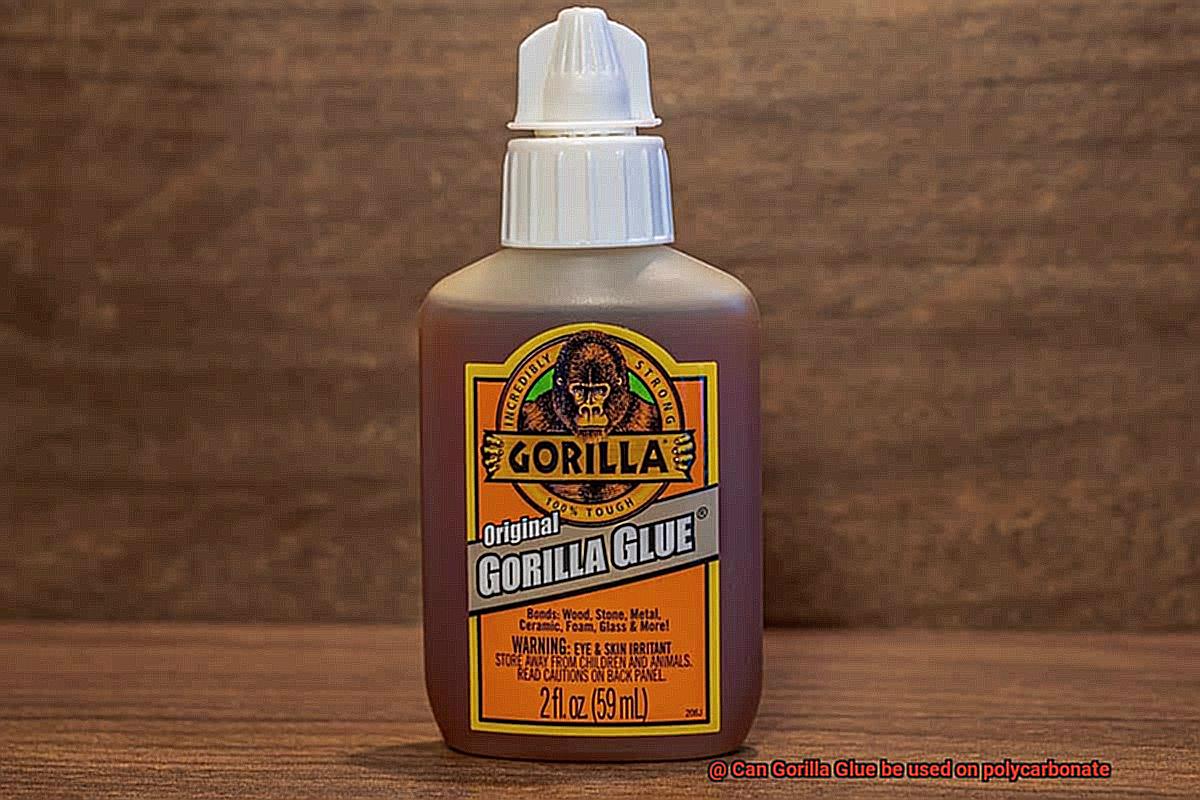
Step 2: Taming the Surface
Polycarbonate’s low surface energy presents a unique challenge for adhesives. To conquer this hurdle, gently roughen the surface using sandpaper or a fine-grit abrasive pad. This creates microscopic scratches that enhance the surface area for the adhesive to grip onto, resulting in a stronger bond.
Step 3: Apply Gorilla Glue Sparingly
In the world of bonding, less is more when it comes to Gorilla Glue and polycarbonate. Excessive glue application can lead to unsightly overflow and compromise the strength of the bond. Instead, apply a thin and even layer of Gorilla Glue for optimal results.
Step 4: Patience is a Virtue
Gorilla Glue typically relies on moisture for activation and curing. However, due to polycarbonate’s non-porous nature, it is less absorbent. As a result, expect longer curing times than usual. Allow ample time for the glue to fully set before subjecting the bonded parts to stress or load. Patience will reward you with a bond that stands the test of time.
Step 5: Consider Specialized Polycarbonate Adhesives
While Gorilla Glue can bond polycarbonate, there are specialized adhesives formulated specifically for this material. These adhesives often offer superior strength and durability. If your project demands uncompromising endurance, consider using an adhesive tailor-made for polycarbonate.
Step 6: Testing, the Key to Success
Before diving into a large-scale bonding project, it is wise to conduct a small test on an inconspicuous area. This allows you to assess the bond strength and compatibility between Gorilla Glue and polycarbonate. By testing beforehand, you minimize the risk of damage or wasted materials if the bond falls short of expectations.
Alternative Adhesives for Bonding Polycarbonate
While Gorilla Glue is a popular choice, there are alternative adhesives that may be even more suitable for your specific needs. In this comprehensive guide, we will delve into different types of adhesives and provide you with all the information you need to make an informed decision.
One alternative adhesive option for bonding polycarbonate is epoxy. This two-part adhesive consists of a resin and a hardener and creates a remarkably strong and durable bond on polycarbonate surfaces. It is commonly used in industrial applications where strength is absolutely essential.
If you are in need of a quick and robust bond, consider using cyanoacrylate, which is also known as super glue. This fast-acting adhesive forms an instant bond when applied to polycarbonate surfaces and is perfect for small-scale projects or repairs where time is of the essence.
Another alternative adhesive option worth exploring is acrylic adhesive, which is specifically designed for plastic materials like polycarbonate. It offers impressive adhesion strength and flexibility, making it suitable for various applications.
Polyurethane adhesive is renowned for its excellent adhesion to a wide range of materials, including polycarbonate. It boasts high durability and resistance to temperature changes, making it an ideal choice for outdoor applications.
Before applying any adhesive, it is of utmost importance to always test it on a small area of the polycarbonate to ensure compatibility and avoid any potential damage to the material. Additionally, it is crucial to consider factors such as the intended use, environmental conditions, and desired bond strength when selecting the most appropriate adhesive.
Testing the Strength of the Bond between Gorilla Glue and Polycarbonate
Let’s start by introducing our main characters. Gorilla Glue is a renowned adhesive known for its unrivaled strength and versatility. On the other hand, Polycarbonate is a tough thermoplastic that’s used in a wide range of applications, from automotive parts to sleek eyewear. Now that we’ve acquainted ourselves with our players, let’s see how they perform together.
To put their bond to the test, we’ll need some pristine polycarbonate samples. These babies must be squeaky clean to ensure a strong bond. Grab your cleaning supplies and give those samples a thorough scrubbing, removing any dirt or grease that could hinder adhesion.
With our samples spotless, it’s time to apply Gorilla Glue. Take a small amount and spread it evenly on one side of each sample. Remember, less is more – we don’t want excess glue oozing out and causing trouble.
Now comes the waiting game. Allow the glue to cure for the recommended time specified by the manufacturer. This will give it ample time to form a robust bond with the polycarbonate. Patience is key here, my friends.
Once the curing time is up, it’s time to put our bond through its paces. We can subject the samples to various stress tests like pulling or bending. And don’t forget your trusty force gauge – it will come in handy for measuring the amount of force required to break the bond.
But hold on tight because there’s more. We can’t overlook durability and resistance. We need to evaluate how our bond holds up over time and in different conditions. Let’s expose our samples to temperature variations, moisture, and other relevant factors to see if they remain unyielding.
Once we’ve gathered all our data, it’s time to assess the bond’s strength. If it meets the mark for our intended application and proves durable under various conditions, then Gorilla Glue emerges as the champion.
It’s important to note that Gorilla Glue’s strength may vary depending on factors like surface preparation and environmental conditions. So, conducting multiple tests and taking an average will give us a more accurate representation of the bond strength.
Before you embark on your adhesive adventures, always remember to follow the manufacturer’s instructions and conduct thorough testing. Different adhesives have different compatibility, so choose wisely based on your specific needs.
OCAxSFDcrxc” >
Also Read: Can I use Gorilla Glue on glasses?
Conclusion
In conclusion, the answer to the question “Can Gorilla Glue be used on polycarbonate?” is a resounding yes. With proper surface preparation and application techniques, this tough and impact-resistant thermoplastic can form a strong bond with Gorilla Glue, a polyurethane-based adhesive that has proven its worth in the world of bonding.
To achieve optimal results, it is crucial to prepare the polycarbonate surface thoroughly. This means removing any dirt or contaminants, lightly roughening the surface with fine-grit sandpaper or using a plastic-specific primer, and ensuring an even application of Gorilla Glue.
The advantages of using Gorilla Glue on polycarbonate are numerous. Not only does it create a powerful bond, but it also boasts versatility across various materials, including polycarbonate. Its waterproof properties make it impervious to moisture exposure, while its temperature resistance allows for use in even the harshest environments. Additionally, its gap-filling capabilities make it ideal for uneven surfaces.
However, there are some drawbacks to consider when using Gorilla Glue on polycarbonate. It may not be specifically formulated for bonding this particular material, leading to potential compatibility issues. Furthermore, its expanding nature during curing can result in messy application.
The solvent sensitivity of Gorilla Glue could also pose a risk to the integrity of the polycarbonate material. Additionally, repairing or removing the adhesive may prove challenging, and there is a possibility that using Gorilla Glue could void warranties or guarantees on your polycarbonate product.
It’s important to keep in mind that individual experiences may vary depending on factors such as surface preparation and application technique. For optimal bonding recommendations, conducting small-scale tests or consulting with both the adhesive and plastic manufacturers is highly recommended.
All things considered, when used correctly, Gorilla Glue proves itself as a compatible adhesive for bonding polycarbonate.

